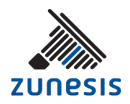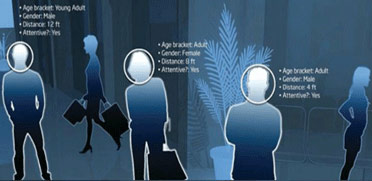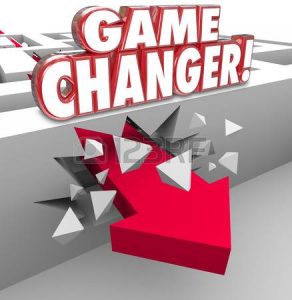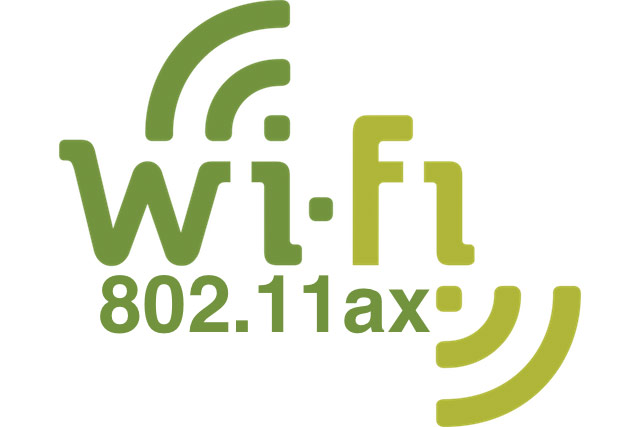When your company name is Zunesis (pronounced – zoo-knee-sis) you can count on being asked two questions on a regular basis; “how do you pronounce that?” and “how did you come up with THAT for a company name?” Truth is, I’ve always welcomed that last question because it gives me an opportunity to talk about our beginning and our journey as a company. In fact, one of our Account Managers suggested we post this as a BLOG because he gets asked these questions so often. So, here goes…
The Journey
The journey began for us in 2004. At that time there were eight of us who represented the Rocky Mountain Region of a worldwide computer and electronic components distributor. We had one Operations person at the time and the rest of us were equally divided between Technical and Sales roles. We all worked well together. Life was good. However, because of changes on the horizon with the distributor organization, our current CEO proposed the idea of starting our own company. Of course, we all shared the normal concerns one could imagine when contemplating leaving a relatively secure environment and taking on the risk of starting your own thing. But, the vote for starting our own company was unanimous.
There are all kinds of tasks associated with establishing a business and, of course, one of those is figuring out what the company name is going to be. To that end, each of us was asked to put some thought into possible names and come back to the team with ideas. I honestly don’t remember what any of the other names were, including the one I suggested. It was our Network Engineer at the time who came back with Zunesis. And, after he explained how he came to this name, we were all on board.
The name is based on a Greek word, “Sunesis”. If you get on your browser and search this word you’ll find a few different definitions. You’ll see definitions like “a running together”, “a flowing together with…”, “knowledge”, “understanding”, you get the idea. The definition we apply to our company name is:
“multiple sources of knowledge and understanding flowing together
to create something greater than the sum of the parts.”
We believe the name Zunesis reflects a spirit of team work and synergy with our clients, our suppliers and employees. So, you may be thinking, “alright, but why the “Z”? Well, at the time, if you Googled Zunesis, we were the only reference that would come back. I just Googled the name while writing this post and we are STILL the only reference that pops up.
Our Logo
 As an aside, have you ever looked closely at our logo? When you do, you’ll see that it is a Zebra. And, on even closer examination, you’ll notice that one of the stripes is Blue. The Zebra’s single blue stripe demonstrates that the answers to our customer’s IT challenges are not always black and white. We at Zunesis offer more than a product. We are here to teach, facilitate, validate, and guide our clients toward the optimum solution for their business. Zunesis understands that every IT solution is unique, just like our zebra.
As an aside, have you ever looked closely at our logo? When you do, you’ll see that it is a Zebra. And, on even closer examination, you’ll notice that one of the stripes is Blue. The Zebra’s single blue stripe demonstrates that the answers to our customer’s IT challenges are not always black and white. We at Zunesis offer more than a product. We are here to teach, facilitate, validate, and guide our clients toward the optimum solution for their business. Zunesis understands that every IT solution is unique, just like our zebra.
So, now you know the meaning behind our name AND, even though you didn’t ask, you have the story behind our logo too.
When your company name is Zunesis (pronounced – zoo-knee-sis) you can count on being asked two questions on a regular basis; “how do you pronounce that?” and “how did you come up with THAT for a company name?” Truth is, I’ve always welcomed that last question because it gives me an opportunity to talk about our beginning and our journey as a company. In fact, one of our Account Managers suggested we post this as a BLOG because he gets asked these questions so often. So, here goes…
The Journey
The journey began for us in 2004. At that time there were eight of us who represented the Rocky Mountain Region of a worldwide computer and electronic components distributor. We had one Operations person at the time and the rest of us were equally divided between Technical and Sales roles. We all worked well together. Life was good. However, because of changes on the horizon with the distributor organization, our current CEO proposed the idea of starting our own company. Of course, we all shared the normal concerns one could imagine when contemplating leaving a relatively secure environment and taking on the risk of starting your own thing. But, the vote for starting our own company was unanimous.
There are all kinds of tasks associated with establishing a business and, of course, one of those is figuring out what the company name is going to be. To that end, each of us was asked to put some thought into possible names and come back to the team with ideas. I honestly don’t remember what any of the other names were, including the one I suggested. It was our Network Engineer at the time who came back with Zunesis. And, after he explained how he came to this name, we were all on board.
The name is based on a Greek word, “Sunesis”. If you get on your browser and search this word you’ll find a few different definitions. You’ll see definitions like “a running together”, “a flowing together with…”, “knowledge”, “understanding”, you get the idea. The definition we apply to our company name is:
“multiple sources of knowledge and understanding flowing together
to create something greater than the sum of the parts.”
We believe the name Zunesis reflects a spirit of team work and synergy with our clients, our suppliers and employees. So, you may be thinking, “alright, but why the “Z”? Well, at the time, if you Googled Zunesis, we were the only reference that would come back. I just Googled the name while writing this post and we are STILL the only reference that pops up.
Our Logo
 As an aside, have you ever looked closely at our logo? When you do, you’ll see that it is a Zebra. And, on even closer examination, you’ll notice that one of the stripes is Blue. The Zebra’s single blue stripe demonstrates that the answers to our customer’s IT challenges are not always black and white. We at Zunesis offer more than a product. We are here to teach, facilitate, validate, and guide our clients toward the optimum solution for their business. Zunesis understands that every IT solution is unique, just like our zebra.
As an aside, have you ever looked closely at our logo? When you do, you’ll see that it is a Zebra. And, on even closer examination, you’ll notice that one of the stripes is Blue. The Zebra’s single blue stripe demonstrates that the answers to our customer’s IT challenges are not always black and white. We at Zunesis offer more than a product. We are here to teach, facilitate, validate, and guide our clients toward the optimum solution for their business. Zunesis understands that every IT solution is unique, just like our zebra.
So, now you know the meaning behind our name AND, even though you didn’t ask, you have the story behind our logo too.
I grew up as the kid who watched Star Trek: The Next Generation and Saturday morning Avengers cartoons. It’s no surprise that I have always been fascinated by technology and what the future holds. I can’t even imagine telling my 6-year-old self that one day we will have a full-sized version of that radio-controlled car he got for his birthday last year. It’s crazy when you think back on the stuff you grew up with and compare them with today’s technology.
I thought I’d take the opposite approach in this blog. Instead of looking to the past, I thought I’d compare the future to what we have today. I took a few future ideas/concepts that I’ve come across in the IT industry as buzzwords and tried to find something like that in today’s technology.
Future Concept: Self-repairing cars
Today’s thoughts:

2019 Lamborghini Terzo Millenio “self-healing” sports car
With self-driving cars being the inevitable conclusion, cars will be soon be able to detect when something is wrong and drive itself to the shop to fix itself. You can extrapolate this to anything. Maybe your car needs new windshield wipers. Well, instead of going to your auto parts store yourself, your car will recognize when they are failing and take care of the problem by itself.
As someone who just had to spend $700 at a dealership because a rabbit decided my car’s wires looked tasty, I can’t wait for this to happen! However, if we look beyond just cars, this technology is available today. HPE recently acquired a storage company called Nimble. If you’re not familiar with Nimble, they’re the only storage company that I know of that claims to be a software company.
If you take a peak under the hood (car pun intended), Nimble’s secret sauce, and the reason HPE purchased them, is a software call InfoSight. It eliminates the need for Nimble, and soon to be HPE, to have tier 1 and 2 support calls. Let’s say there was an issue. Nimble would explore the issue, fix that one instance, and then mass update all other instances of that same scenario across their whole customer base. Much like my car driving to the shop overnight to fix a problem, without even knowing, Nimble customers are getting fixes. We’re not quite to self-repairing cars, but this technology could be a foundation for that in the future.
Future Concept: AI (Artificial Intelligence) Based Security
Today’s thoughts:
Of all the “Future Ideas” I came across, I think this one is closer to becoming a reality than most. What I mean by the future idea of AI based security is truly removing the human element from security altogether. The technology isn’t far off, if not already here today.
Aruba’s UEBA (User and Entity Behavior Analytic) product called Introspect constantly monitors and reacts to any issues within a network. It looks for anomalies from “normal” use and can send out an alert and even act on its own. A great example for Introspect is if it detects malicious activity from an employee device, it can automatically quarantine it in real time to protect the rest of the organization. This may not seem too new, but this applies for all entities within an organization. A few of the well-known cyber security breaches over the past decade have come from devices already inside of the company firewall, like a thermostat or printer. If a thermostat starts looking at financial documents, Introspect would flag that as an anomaly and shut it down. A regular firewall or end point security tool would miss that.
looks for anomalies from “normal” use and can send out an alert and even act on its own. A great example for Introspect is if it detects malicious activity from an employee device, it can automatically quarantine it in real time to protect the rest of the organization. This may not seem too new, but this applies for all entities within an organization. A few of the well-known cyber security breaches over the past decade have come from devices already inside of the company firewall, like a thermostat or printer. If a thermostat starts looking at financial documents, Introspect would flag that as an anomaly and shut it down. A regular firewall or end point security tool would miss that.
I think we’re still a few years out from Skynet (or Ultron for the comic book nerds) being brought online, but the Missile Defense Agency is already working with/testing AI based systems for training. Tools like Introspect are a great way for people to build trust in AI. Gradually, it will be responsible for more and more of the everyday things we take for granted.
Future Concept: A keyless, cashless, ID-less world
Today’s Thoughts:
Imagine a world where you don’t need to carry a wallet or keys. With more and more of the things we interact with everyday becoming connected to the internet, it’s not a far leap to say that one day we won’t need to carry things like ID’s or even cash.
In the world we live in today, how annoying is it that I still have to take out and show my Costco card every time I walk in? Imagine just walking in without having to do that. The store already knows who I am and how I intend to pay. I just shop like normal and walk out.
There’s a big creepy factor with this. With any new technology, society has to acclimate to the change. Imagine if I told my 6-year-old self that we would all be walking around with devices that know our locations at all time. Super weird, right? Today, we don’t even think about that.

If you’ve read this far, you can probably tell that I love talking about this stuff. If you’d like to learn more about any of the vendors or products I mentioned (Nimble, Infosight, Aruba, Introspect), please reach out to me. If you think I’m way off on this and completely wrong, please reach out to me as well. I’d be happy to debate you! Thanks for your time.
The team has worked their backsides off trying to win a new account. The signature comes back, and the Purchase Order arrives soon after. Time to exceed customer expectations. A kickoff call is scheduled and introductions are made. Post kickoff call, project details are sent back to the client for approval, and we’re off and running. The first month of the account leads to fine-tuning specifics, establishing a main point of contact and on-time deliverables. A call cadence is established and the account is in good shape. Fast forward six months later. The deliverables are still timely and error-free, but the call cadence has fallen off the Hillary Step of Everest.
Email communication becomes the norm and sometimes even text messages. It’s assumed (you know what that means) everything is going along just fine. However, it’s uncovered that an element of the deliverable hasn’t been used or isn’t functioning properly. The issue escalates to Executive Management on both sides and then the firestorm begins. The account went from a strong candidate for renewal to being in jeopardy of falling into the abyss of non-renewable accounts.
Has this ever happened to you? Ok, maybe not as dramatic, but I think we have all been there. This happened to me, and it was a refreshing slap of reality across my face. We get busy with daily operations, tactical thinking and oh yeah; there’s that thing called LIFE which can be challenging at times. Complacency sets in and the theory of “No news is good news,” becomes commonplace. Complacency is not a good trait to have in the workplace (or anywhere for that matter).
Problem Solve
It’s time to problem-solve. Don’t waste time pointing fingers; it is what it is. The immediate action item is to establish verbal communication over the phone or if budget allows, a physical visit. Nobody picks up their phone nowadays, but you must pick up the phone, dial the number and leave a voicemail. It works! I have seen myself do it! Now, the next step is to follow up with an email which regurgitates what you said in the voicemail. It’s documented this way. However, you’re far from done on problem resolution. Persistence is essential, and the phone call regiment continues until you get your contact on the phone and actually talking. It’s equally important to have a team in place who are aware of the issue. Call them too! There’s a good chance the issue will need the assistance of a few others based on their core competencies. The team will also be ready to troubleshoot and answer any questions which requires a skill where you might have to go back to school, take out another student loan and take multiple classes just to become a novice. Another important element to the firestorm is to have a scribe in place so pertinent information can be captured for the team to refer to if need be. Again, more documentation. Finally, be ready to have solutions / options to present, but also be ready to listen.
Chances are, you’ll hear a lot of frustration on the other line and rightfully so. Admit you will take full ownership of the issue and come prepared with a set of solutions /options in place. It’s also important to assure this type of disconnect will not take place again, and communicate to your client there have been steps to ensure it doesn’t. Be sure to implement several quality checks and tests after the issue has been resolved. Then you can report back (AND CALL) to your client you’re on top of the matter. This shows loyalty to the client and a concern for the success of the client as well as the success of your organization.
Finally, call the client frequently (in addition to the regularly scheduled calls) to make sure everything is working for them. If there is something else which would provide value to your existing products / services for your client, this would be the time to pull the rabbit out of the hat.
So, at the end of the day, imagine what might have happened if a phone call was made instead of unanswered emails or texts. Remember exactly how you felt when the issue was escalated to Executive Management. Remember your clients’ success or lack of if you don’t stay in constant communication. It’s time to turn back the technological clock and stop counting on electronic messaging to communicate important information. Even if there’s nothing going on, there’s no harm to pick up the phone and say ‘Hi.’
Electronic messaging is integral. Now, picking up the phone is perceived as a necessary evil. Let’s change that to electronic messaging is the necessary evil and talking is personable. So pick up the phone, but please don’t let it be a rotary phone.
In the past few years, we have seen some significant advancements in wireless technology. Starting with 802.11ac Wave 1, we saw about double the theoretical max data rate (from 600Mbps to 1.3Gbps) from the previous standard 802.11N. Thanks to the addition of 80MHz channels and 3 spatial streams. The next generation, 802.11ac Wave 2, increased those numbers even further by adding 160MHz channel support and Multi-User MIMO.
The advancements in these AC technologies were much needed in the industry, but I wouldn’t necessarily call them “game changers”. The increase in  channel frequency was achieved by bonding more channels, meaning that the extremely dense real-world deployments could not effectively take advantage of the technology due to channel overlap. Even MU-MIMO was an advancement of a technology that had been around for over a decade – single user MIMO.
channel frequency was achieved by bonding more channels, meaning that the extremely dense real-world deployments could not effectively take advantage of the technology due to channel overlap. Even MU-MIMO was an advancement of a technology that had been around for over a decade – single user MIMO.
The next generation of WiFi promises to be that “game changer” technology the wireless world has been waiting on. This blog will focus on the total redesign that went into 802.11ax, and the benefits that this technology will soon be bringing to mobile networks hopefully by early 2019.
Benefits
802.11ax is designed specifically for high-density public environments, such as libraries, stadiums, conference centers, airports, etc. But it also will be beneficial in Internet of Things (IoT) deployments, in heavy-usage homes, in apartment buildings and in offices that use high bandwidth applications like videoconferencing. Perhaps the most exciting feature of 802.11ax is that it was designed for cellular data offloading, allowing cellular networks to offload data to a compatible wireless network in cases where poor cellular connection is present. Note – I’m a little biased on this feature since my house only gets “2 bars” of cell reception on a good day.
The ReDesign

802.11ax touts a theoretical maximum bandwidth of 14Gbps, delivering single streams at speeds up to 3.5Gbps. Thanks to the new multiplexing technology that was adapted from the world of LTE (cellular), a single AP can deliver 4 of these 3.5Gbps streams to equal that theoretical max bandwidth number of 14Gbps. Thanks to a higher order of QAM modulation, which allows more data to be transmitted per packet, 802.11ax delivers nearly 40% more real throughput when compared to 802.11ac technology. The total number of available channels will also increase in 802.11ax. There has been talks of the FCC opening up more of the radio spectrum, however this is not how 802.11ax achieves a higher number of channels. Instead, 802.11ax creates broader channels and splits them into narrower sub-channels. This will drastically increase spectrum utilization and decrease interference on the wireless network.
802.11ax also made some significant improvements to the Multi User MIMO technology. With AC Wave 2 AP’s arecapable of transmitting 4 concurrent down-streams of data. 802.11ax allows for 8 simultaneous streams, and makes use of a technology called explicit beamforming to better aim the streams at the receiving client radios. This will provide better reception, range, and throughput while minimizing interference on the network. Even more importantly, 802.11ax piggybacks on MU-MIMO with an LTE cellular base station technology called Orthogonal Frequency Division Multiple Access (OFDMA). This allows each MU-MIMO stream to be split in four additional streams, boosting the effective bandwidth per user by four times. From a user perspective, the network will seem much less congested than with 802.11ac.
The final big improvement in 802.11ax comes from the device side, rather than the network. As wireless technology improves client battery life typically also improves due to data being transmitted faster and further, meaning the client device does not need to work as hard. 802.11ax has built on this trend by introducing a feature called “time scheduling”. This enables Aps to tell clients when to go to sleep and provides a schedule of when to “wake” to receive the next transmission. These are very short periods of time, but make a huge difference in the overall battery life of a device as the wireless card is no longer “always on”.
In conclusion, 802.11ax aims to increase network efficiency, range, speed, and reception while minimizing the issues that haunt us today in dense environments: inefficient spectrum utilization and interference. Consumer grade 802.11ax routers have already begun shipping, starting with Asus who shipped their router on August 30, 2017. Enterprise access points are expected to begin shipping around mid 2018. As with 802.11ac wave 2 the major bottleneck looks like it will again be client devices. To take full advantage of the technology client devices need to be equipped with AX capable wireless cards, giving them access to the 8 MU-MIMO spatial streams. However, I expect client device adoption to be much swifter with this standard because of the significant battery life improvements (which is a big selling point for phones). Only time will tell, but the good news is that 802.11ax is backwards compatible with both 802.11ac and 802.11n devices.




